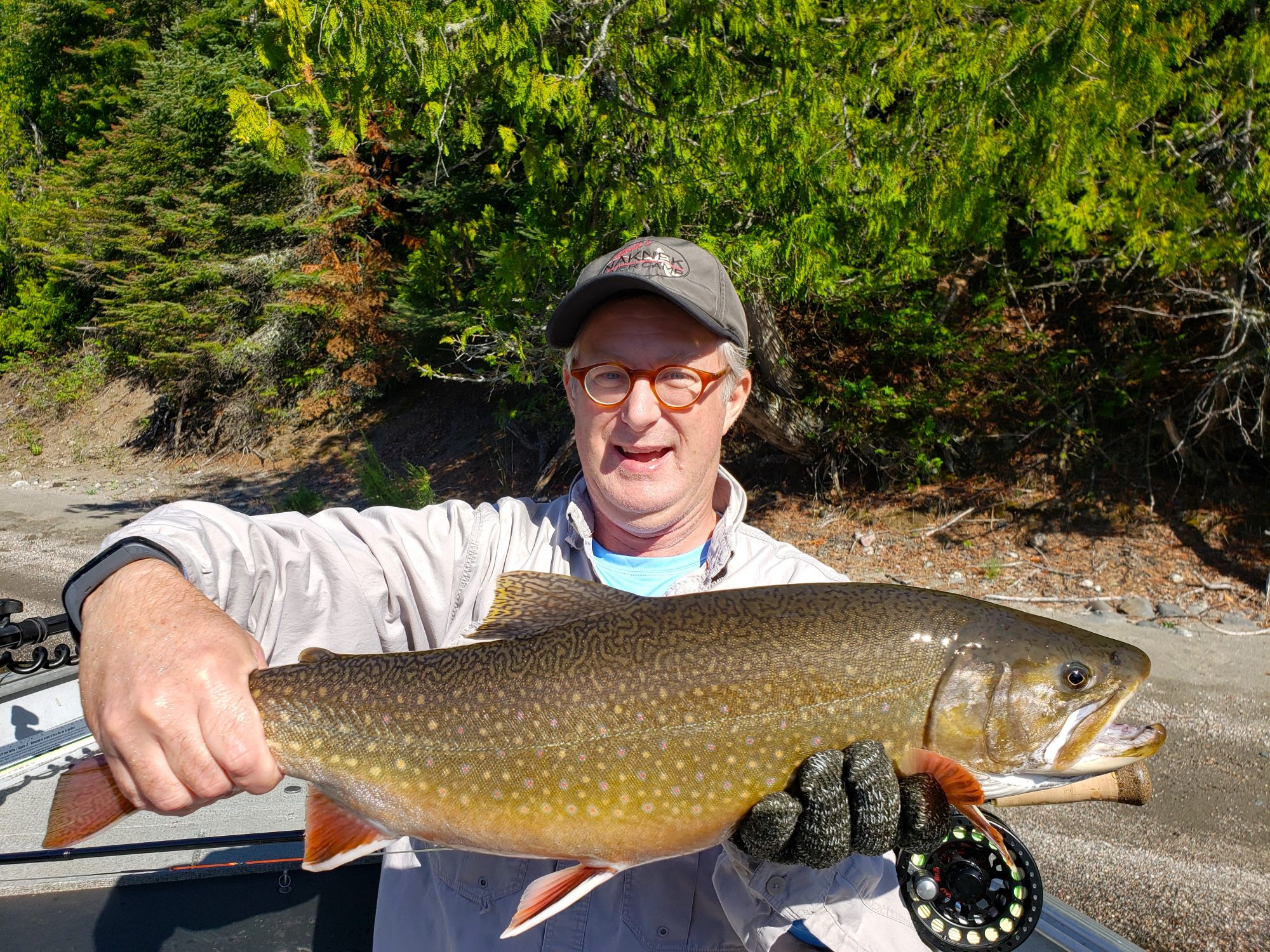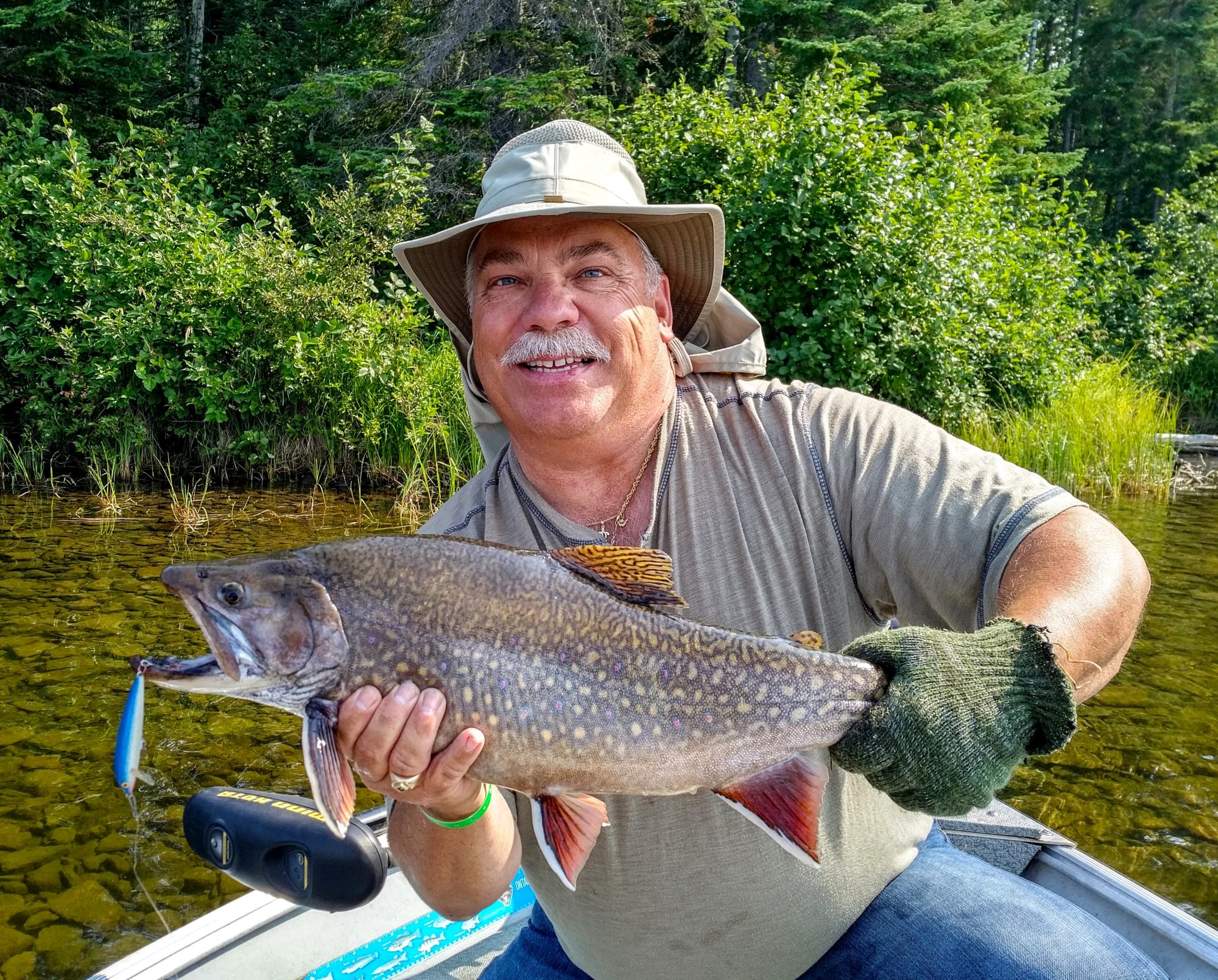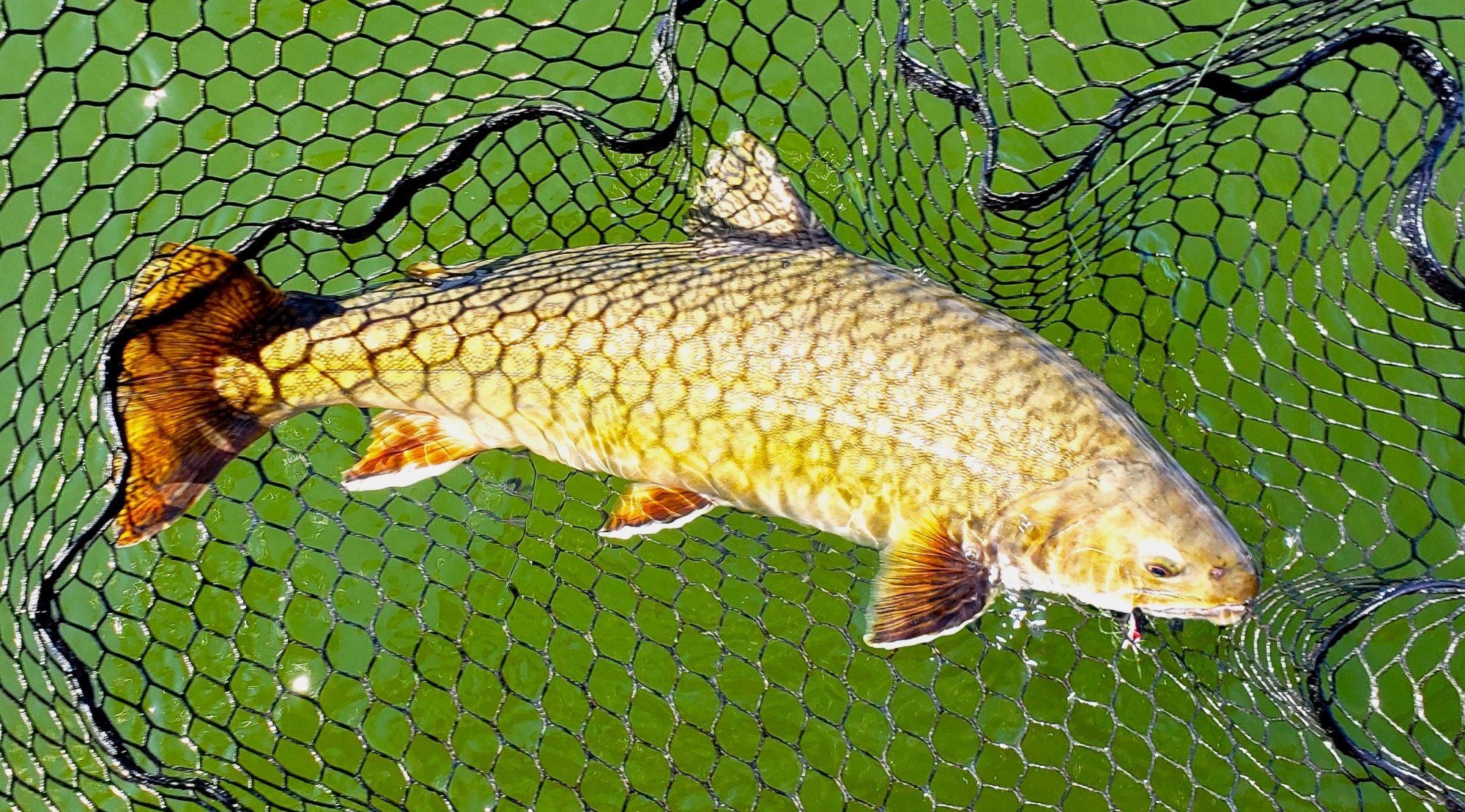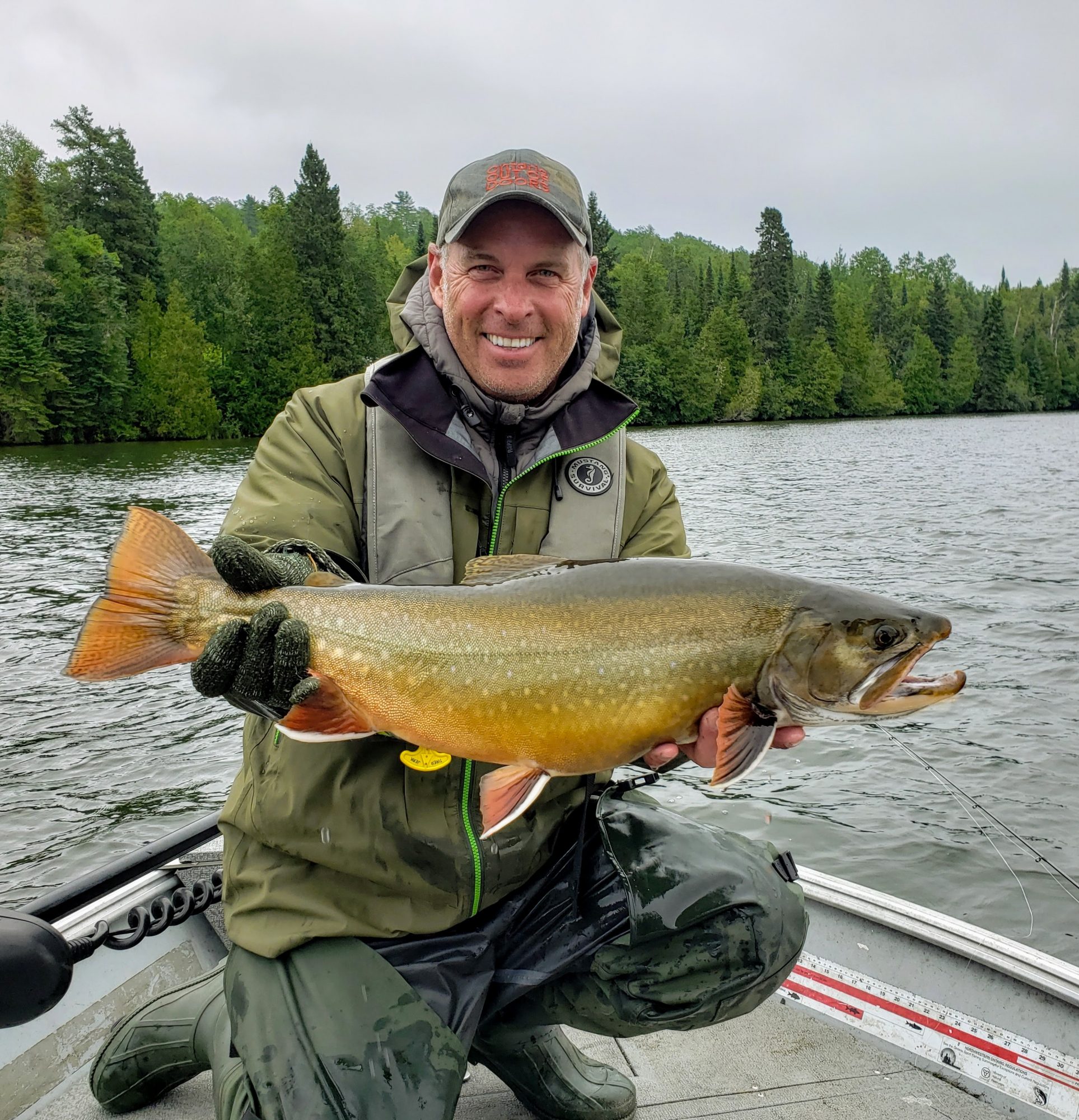
Why are Northern Ontario Brook Trout So Big?
Back to Superior Country BlogAs someone who has fished for brook trout all over North America, I’ve gotten a pretty good feel for what makes good brook trout water. This travel has also given me a great chance to compare the waters of Lake Nipigon, the Nipigon River and Lake Superior to everywhere else. It has also been a life-time passion to study, observe and chase the biggest brookies in the world.
So, when I am guiding and a client asks “Why Are Northern Ontario Brook Trout So Big?” I’ve got some solid information to provide.

Superior Country brook trout grow big – G Ellis photo
Here are the key points:
- Northern Ontario has the largest and most pristine habitats to grow trophy sized brook trout.
- Northern Ontario has the genetic stock that grows large fish: The world record brook trout was caught in the Nipigon River in 1915 and that record still holds.
- The food, cold water and growing season required to make brookies extra large is found here.
- The Nipigon River and Lake Superior has restrictive size and harvest rules that help brook trout achieve a huge size.
- Northern Ontario has huge areas of remote water where access is limited and fish get old without seeing a hook.
Here are some more fleshed out answers to the question: “Why are Northern Ontario Brook Trout So Big?”
The Waters

Clean water grow big brook trout – G Ellis photo
Although you can grow big trout in smaller lakes and rivers, the number of fish will always be limited by habitat. If wild brook trout live in big waters, a lot more of them have room to grow. Best of all, large numbers of big fish can inhabit a wide variety of habitats. Lake Superior is gigantic, but if you just take Nipigon Bay and Black Bay and consider them as separate water bodies, they would be among the largest brook trout lakes in the world.

Bill Spicer of the New Fly
The Nipigon River is a massive piece of water and includes a reservoir called Jessie Lake. The Nipigon River is also the largest tributary entering Lake Superior, which means it is also a massive brook trout factory. The head waters of the Nipigon River is sprawling Lake Nipigon. Nipigon is the largest lake entirely within the province of Ontario. Lake Nipigon has a total area – including islands within the lake – of 4,848 square kilometres (1,872 sq mi). Compare that to mighty Lake of the Woods, that is 3,150 square kilometres (1,220 sq mi). Nipigon also has some very large islands including Caribou, Geikie, Kelvin, Murray and Shakespeare Islands. This makes for nearly endless shoreline fishing potential. It is important to note that the waters of Lake are cold, clear and unpolluted. This is a critical factor when you want to grow brookies big.
Genetics

Good genetics grow big brook trout – G Ellis photo
As already mentioned, the World Record brook trout, caught on July 21, 1915, came from the Nipigon River. Sure, the river was wilder back then and didn’t have the three dams that tamed those wild rapids. Yet the incredible genetics that created a 14-and one-half pound brook trout are still there. This is why “Nipigon strain” brook trout are prized around the world and are used when resource managers want to stock brookies that can grow to a larger size.

The world record brook trout was caught in the Nipigon River
A quick story: A couple years ago a friend was doing some work on one of the dams on the Nipigon River. They needed to de-water a sluice way and some brook trout were trapped. My friend, who has caught some very large brookies, swears that one of the brook trout trapped (and released safely back to the river) would have probably beaten the present world record. He said was a giant. This was within the last decade. Breaking the World Record can still happen here.
Food, Water Temperature and Growing Season

Good genetics. ample food and clean water grow big brook trout – G Ellis photo
Some of the key answers to the question “Why Are Northern Ontario Brook Trout So Big” have to do with food, water temperature and growing season. All the foods that grow big brook trout are found in the Nipigon and northern Lake Superior watershed. The rainbow smelt – which is a non-native species – has become the basis of the diet for big brook trout. Giant brookies stuff themselves with smelt and grow fast and round on them. Smelt are oily, nutritious and numerous. Other great brook trout foods found in the system including sculpin, stickleback, dace and shiners. Then, there are the huge hatches of mayflies, stoneflies and caddis that will get big brookies feeding on the surface. June and July are peak time for these hatches. This smorgasbord of food is non-stop and brookies can’t help but grow big on them.

Big brook trout are on the menu in Superior Country – G Ellis photo
As for temperature and growing season, brook trout like cold water. The prime water temperature is between 50 and 55 f. These types of water temperatures are often found in the middle of summer on Lake Superior and Lake Nipigon. Having fish prefer ice-water may seem counter-intuitive, but consistent cold water in open water keeps brookies active and on the feed all summer.
Regulations

Superior Country brook trout grow big – G Ellis photo
One thing many people don’t realize is that 30 years ago, Nipigon strain brook trout were on the ropes in their home waters. Over-harvest, uncontrolled water levels during the spawn and habitat loss had the brook trout at a very depressed level. The Nipigon was a shadow of its former glory and trophy fish were rare. However, some forward thinking anglers and an Ontario Ministry of Natural Resources biologist named Rob Swainson began a push to protect these fish and allow them to recover. Water levels became more stable thanks to an agreement between the MNR and the hydro generation company. This made it better for brook trout spawning and survival of eggs. The biggest game changer was the implementation of a minimum size on Lake Superior and Nipigon brook trout of 22 inches and, a one fish limit. The 22-inch size limit allows every brook trout to spawn three times before potential harvest. Luckily, promotion of catch and release has meant very few Nipigon strain brookies are harvested period. If you don’t kill Nipigon brook trout, they can grow big and numerous. It’s a win/win.
The past decade has seen the brook trout rebound and more larger fish than have been seen in decades are being caught.
Remote Waters

Gord Ellis with a huge Lake Superior brook trout – G Ellis photo
Although you can drive right over the Nipigon River on the trans Canada highway, a lot of the Nipigon system and Lake Superior is relatively remote. Sure, there are boat launches and access points for anglers. And there are also lodges that can house you and guides available to take you fishing to some of these spots. Yet the large and remote aspects of Nipigon and Lake Superior mean there are lots of places for fish to live and grow. It also means that if you are angler who wants to get away from crowds, you can do it here.
So, “Why are northern Ontario brook trout so big?”
That’s why.
You should try it out for yourself soon.

 Walleye
Walleye Northern Pike
Northern Pike Lake Trout
Lake Trout Brook Trout
Brook Trout Steelhead
Steelhead Salmon
Salmon Smallmouth Bass
Smallmouth Bass Perch
Perch Superior Picnics
Superior Picnics
